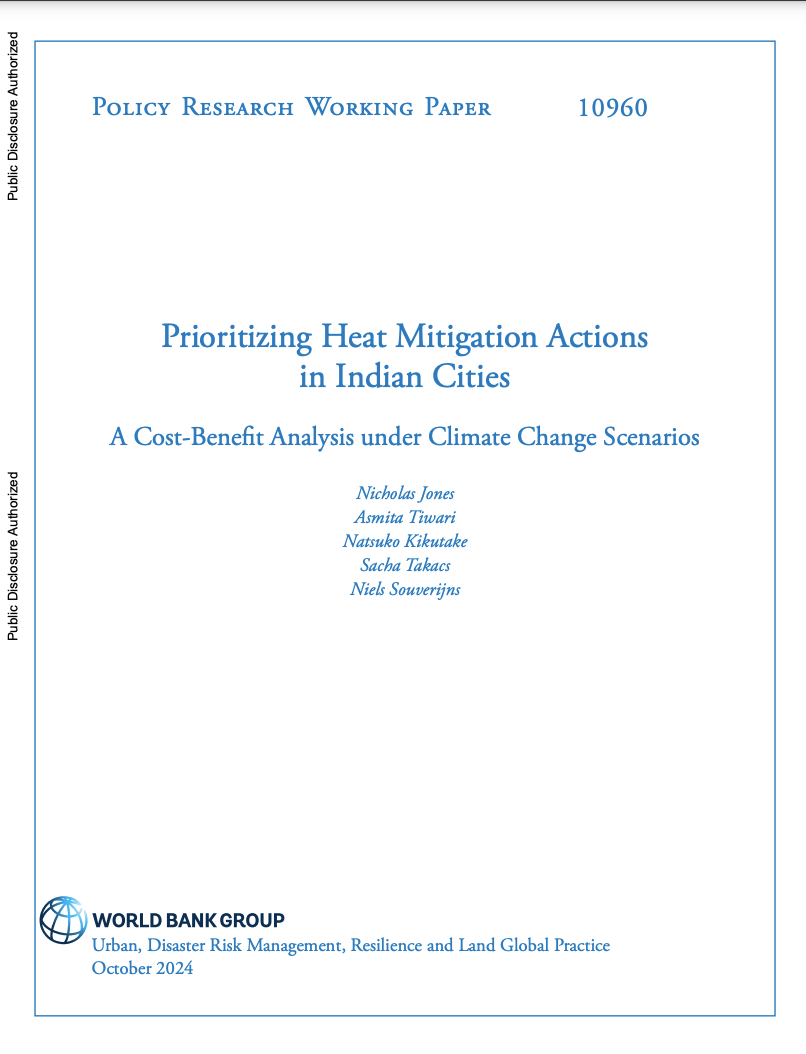Although deaths and economic losses due to extreme heat are rising globally, heatwaves remain a “hidden hazard” whose impacts are under-recognized due to measurement and valuation challenges. Cities in India are developing Heat Action Plans that combine physical cooling measures (such as urban greening and reflective roofs) with public health measures (such as heat-health early warning systems). However, there is a key knowledge gap on the relative efficacy of these actions. To inform debate on how scarce public funds could most efficiently be allocated to reduce deaths and productivity loss due to extreme heat, this paper develops spatially explicit heat risk maps for Lucknow, Chennai, and Surat under climate scenarios; models future health and economic losses under a “no intervention” scenario; and estimates the costs and benefits of alternative sets of heat mitigation actions.
Prioritizing Heat Mitigation Actions in Indian Cities
A Cost-Benefit Analysis under Climate Change Scenarios
October 28, 2024

